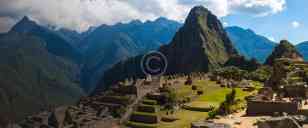Lima
In the north is the city of Caral, the oldest civilization of America, and to the south is the Archaeological Complex of Pachacamac. Lima's history predates the colonial presence in the country. The establishment of the viceroyalty transformed the city into the main political and administrative center of South America. During this period, significant churches, monasteries, mansions and balconies were built. he arrival of modernity didn’t transform the historic center, which is recognized as a World Heritage Site.
Museums with great works of art, archaeological sites, beaches, the boardwalk, valleys, natural reserves, the nightlife, the thrill of adventure sports, and the exquisite cuisine gives Peru’s capital an authentic personality and makes tourism in Lima a unique experience in the country.
Lima
City Tour
In the north is the city of Caral, the oldest civilization of America, and to the south is the Archaeological Complex of Pachacamac. Lima's history predates the colonial presence in the country. The establishment of the viceroyalty transformed the city into the main political and administrative center of South America. During this period, significant churches, monasteries, mansions and balconies were built. he arrival of modernity didn’t transform the historic center, which is recognized as a World Heritage Site.
Museums with great works of art, archaeological sites, beaches, the boardwalk, valleys, natural reserves, the nightlife, the thrill of adventure sports, and the exquisite cuisine gives Peru’s capital an authentic personality and makes tourism in Lima a unique experience in the country.
Larco Museum
Larco Museum is the best introduction if you come to visit Peru. It counts with one of the best samples of Pre Columbian art. It is considered as the favourite museum in Lima for foreing visitors. It was founded by historian Rafael Larco Hoyle (1901-1966) who among the years collected thousands of artifacts from different Peruvian cultures.
The museum also features artwork from the Cupisnique, Vicus, Chimu, Lima, Chancay, Paracas, Nasca, Chincha, Chavin, Tiahuanaco, Huari and Inca cultures.
The museum is split into the Introductory Room, Cultures Gallery, Textile Room, Sacrifice Ceremony Room, Ceremonial Vessels Room, Gold and Jewelry Gallery and Erotic Art Gallery.
Travel Style: Active
Service Level: Standard
Trip Type: Small Group
The museum also features artwork from the Cupisnique, Vicus, Chimu, Lima, Chancay, Paracas, Nasca, Chincha, Chavin, Tiahuanaco, Huari and Inca cultures.
The museum is split into the Introductory Room, Cultures Gallery, Textile Room, Sacrifice Ceremony Room, Ceremonial Vessels Room, Gold and Jewelry Gallery and Erotic Art Gallery.
Travel Style: Active
Service Level: Standard
Trip Type: Small Group
Culinary Experience
The Culinary Experience, is not only a culinary tour, it is an experience where passengers will learn from its origin, about Peruvian gastronomy, as well as the elements that accompany it like music and of course the Pisco!
Travel Style: Active
Service Level: Standard
Trip Type: Small Group
Travel Style: Active
Service Level: Standard
Trip Type: Small Group
Pachacamac
The majesty of the palaces, temples, plazas, and the high truncated pyramid at the site convey to us the political, cultural, and religious hierarchy of ancient Pachacámac. In the pre-Inca and Inca periods, it was the most important oracle of the Peruvian coast, where thousands of pilgrims travelled from the farthest corners of ancient Peru.
The god Pachacámac, indigenous to the central coast, survived the influence of the Incas and the Spanish. According to Inca mythology, he was the god of fire and the child of the sun, rejuvenator of the world—in short, the creator of the world and all the creatures that inhabit it.
Travel Style: Active
Service Level: Standard
Trip Type: Small Group
The god Pachacámac, indigenous to the central coast, survived the influence of the Incas and the Spanish. According to Inca mythology, he was the god of fire and the child of the sun, rejuvenator of the world—in short, the creator of the world and all the creatures that inhabit it.
Travel Style: Active
Service Level: Standard
Trip Type: Small Group
Peruvian Paso Horse
The Peruvian Paso or Peruvian Horse is a breed of light saddle horse known for its smooth ride. It is distinguished by a natural, four-beat, lateral gait called the paso llano. This breed is protected by the Peruvian government through Decree number 25919 of Peru enacted on November 28, 1992, and has been declared a Cultural Heritage of the Nation by the National Institute of Culture (INC).[1] Due to the isolation suffered for about 400 years and the selection made by their breeders, this breed is very particular in their body proportions and an ambling gait or "paso llano" that is characteristic. It is typical of the northern Peruvian regions of the country from which it originated. Trujillo city is considered the "Cradle of typical Peruvian Paso Horse."
Travel Style: Active
Service Level: Standard
Trip Type: Small Group
Travel Style: Active
Service Level: Standard
Trip Type: Small Group
PERFECT YOUR DREAM VACATION
This is one of the world’s best-known hikes and will reward those willing to break a sweat with a stunning combination of mountainscapes, cloud forests, and jungles.










